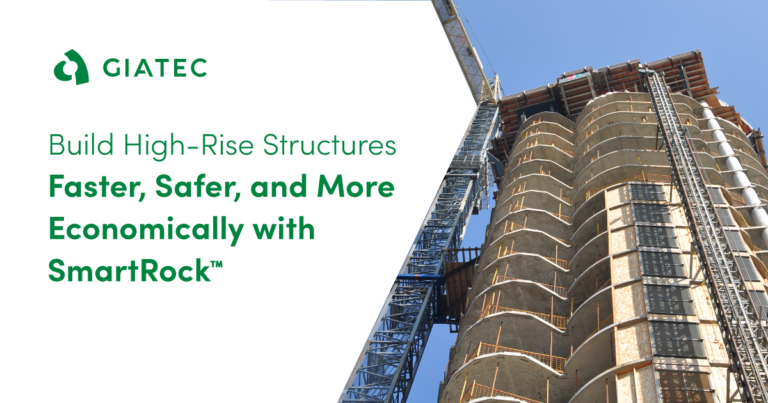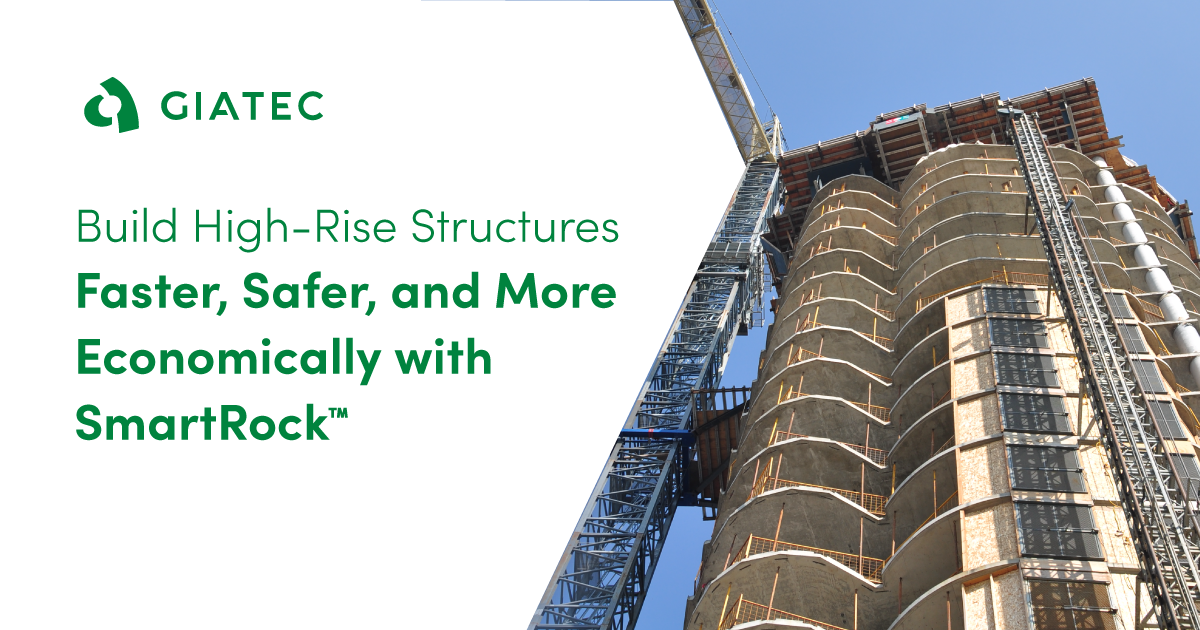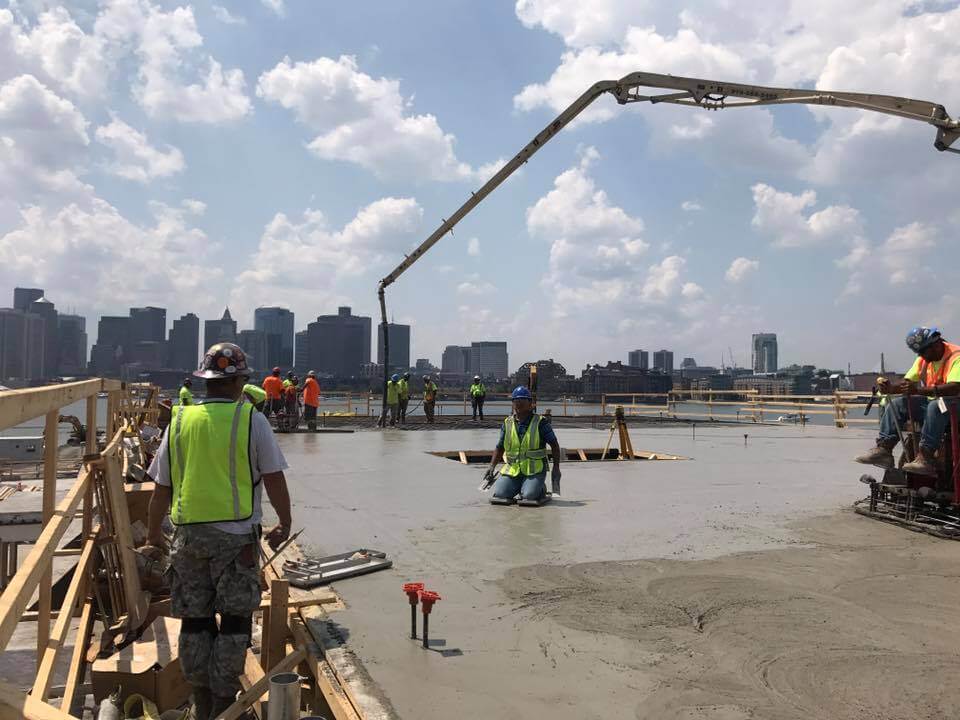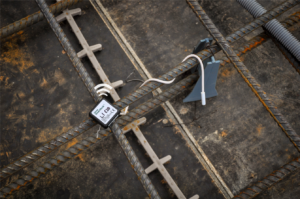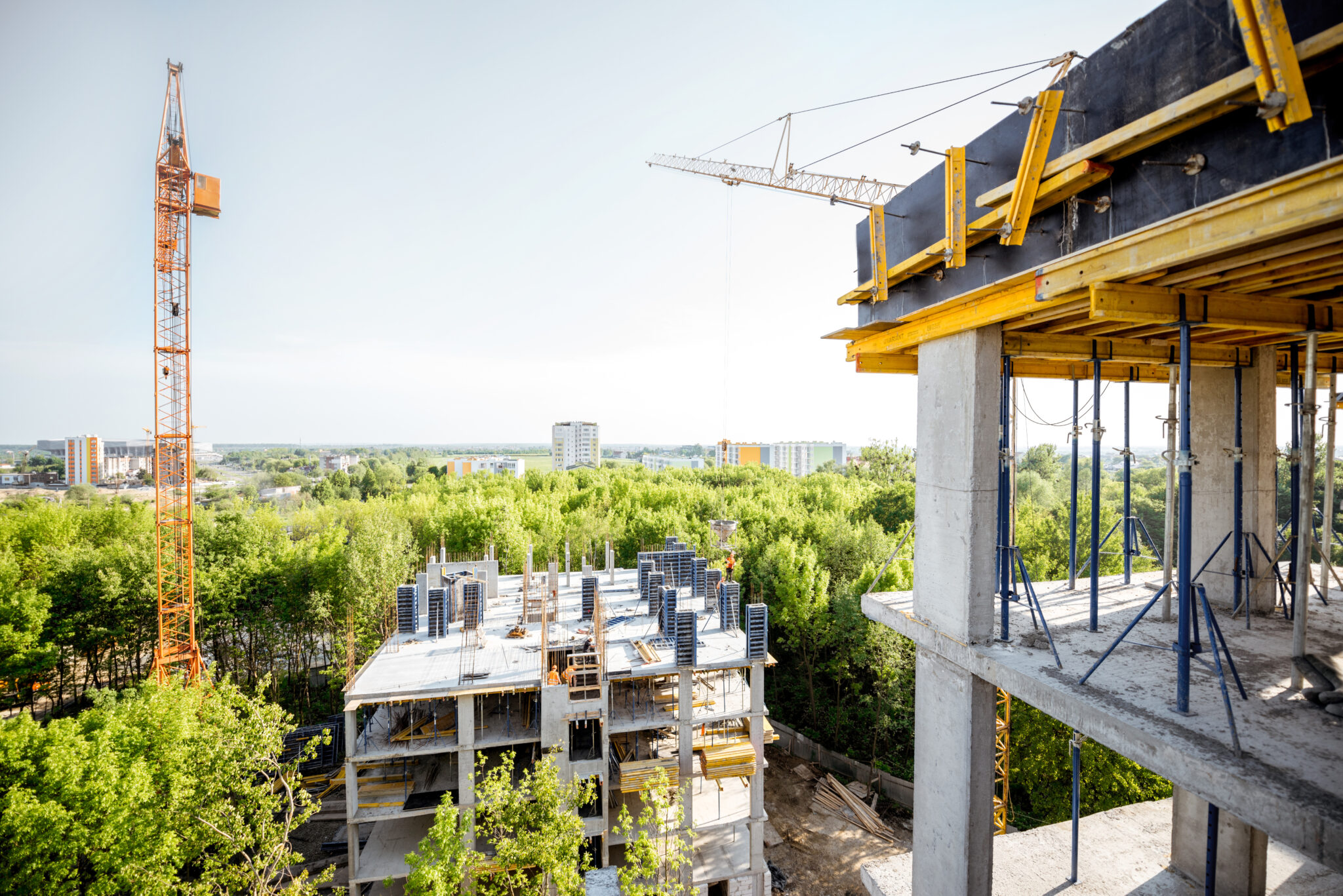High rise buildings are a huge undertaking—no pun intended. In terms of scale, personnel, timelines, costs, scheduling, planning, and logistics—high rise construction projects are significant investments.
SmartRock® Long Range Savings for Big Projects
Each day on a jobsite including your crew, fuel, equipment, etc. can cost between ten and fifteen thousand dollars on average. Therefore, it’s absolutely crucial that you have a plan in place that limits setbacks and inefficiencies.
If you’re reading this, you probably know that any construction project can encounter unexpected roadblocks—especially large scale projects like high rise buildings. According to McKinsey Global Institute “Large projects typically take 20% longer to finish than scheduled and are up to 80% over budget.” It’s beyond frustrating for project managers and contractors when jobs run behind schedule because it eats into profits and impacts your company’s reputation.
There are a number of factors that can slow down project completion, many of which are out of your control. Unavailable resources or tradespeople, improper material handling, poor productivity, equipment breakdown, poor work quality requiring rework, and even weather factors can all push projects past deadlines and budgets.
There’s one—often overlooked—roadblock that’s traditionally seen as a crucial step in high rise jobs that can really slow things down.
Concrete Cylinder Testing
If you’ve worked on high rise projects, it’s likely you’ve experienced delays because of cylinder testing or break testing. Since the 19th century, concrete cylinder testing has been a standard practice for testing the strength of in-situ concrete, but almost no advancements have been made to speed up the process. Although it has long been seen as the most cost-effective concrete strength testing method, cylinder break testing can quickly become inefficient and expensive on larger projects.
ASTM C31 outlining standard-cured or field-cured cylinders requires analysis by a third-party laboratory for compression testing. This means that your various concrete specimens need to be picked up from your jobsite and transported to a lab. After that, you’ll have to wait for the breaks to be performed at regular intervals as specified in the project plan.
Depending on strength requirements, specimen pickup timing, how busy the lab is, and tons of other factors during the long process of cylinder testing, your onsite construction can come to a complete standstill for days or even weeks. In short, your project ends up on hold until you get break test results.
The most frustrating reality of concrete cylinder break tests is that the process is out of your control. However, contrary to popular belief, these delays and uncertainties can be avoided.
How Do You Avoid Concrete Cylinder Testing Delays?
With wireless concrete maturity sensors in your in-situ slab, you can rely less on third-party labs and get concrete strength results in real-time, directly onsite. This technique relies on the concrete maturity method as outlined in ASTMC1074.
SmartRock® Long Range Savings for Big Projects
What Is the Maturity Method?
ASTMC1074—the standard practice for maturity—defines the method as “a technique for estimating concrete strength that is based on the assumption that samples of a given concrete mixture attain equal strengths if they attain equal values of the maturity index.”
In other words, maturity is a value that represents how cured your concrete is. By calibrating the appropriate mix design with a single round of break testing, you can chart the strength of your concrete based on temperature and curing time.
Measuring Concrete Strength With Smartrock Wireless Concrete Sensors
With SmartRock, you’ll be able to monitor the strength of your in-situ concrete in real-time, completely wirelessly.
First, you’ll tag your individual sensors and connect them to the SmartRock app. Before pouring your concrete, the sensors are installed on the rebar close to the surface of the pour. The sensor’s cable and temperature probe are placed at the desired locations to collect temperature readings. Concrete is then poured into the formwork normally, and results are available immediately in the SmartRock app.
The data from your SmartRock sensors can be accessed and shared by anyone on your jobsite. With the addition of SmartHub™, data from multiple concrete strength sensors can be monitored at once, remotely. As an extension of the SmartRock app, you can log in to the Giatec 360™ dashboard online and gain access to additional features that give you even more insights into your concrete structures.
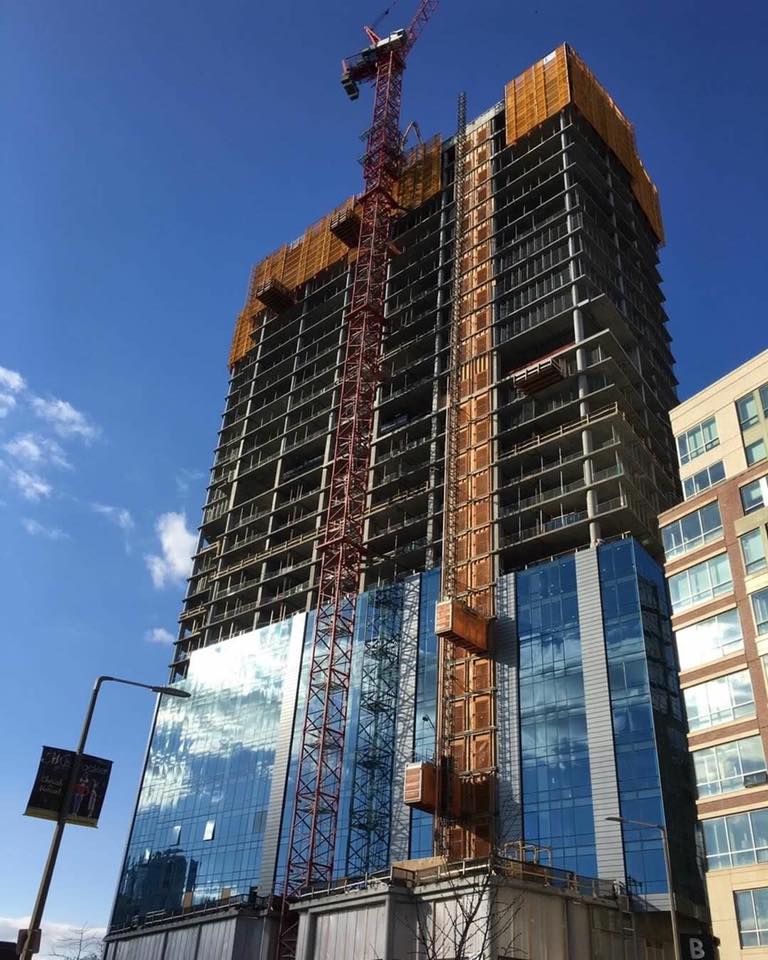
By the time they reached the fifth floor of the high rise, they eliminated break tests entirely and relied on SmartRock sensors for the rest of the build. The S&F team was able to schedule tensioning of slabs within an hour of the concrete achieving the required strength instead of waiting a minimum of 24 hours for break test results. The massive 28-storey high-rise took only six months to complete from first-pour to finish.
If you choose SmartRock, for your next high rise build, you don’t just get real-time and remote monitoring of concrete temperature and strength. Obtaining data regarding the curing and hardening of your mass concrete elements will be easier and faster for your whole crew. Best of all, you’ll no longer be at the mercy of third-party labs having to wait for break test results.
Saving Time and Money With the Maturity Method
Making this small shift to the concrete maturity method will help you optimize your schedule and save money on testing and labor costs. The fact that you can have results onsite means that you don’t have to pay for a break test technician to cast, collect, deliver, and then test the cylinders offsite. This can account for up to 50% on direct test cost savings.
Having real-time concrete strength results will also allow you to plan your project more accurately. This more efficient use of resources can mean up to $10,000 in labor savings for each floor of your high-rise building.
Ultimately, using the maturity method will bring some predictability to the build and allow you to take control of your jobsite for better results—faster.

